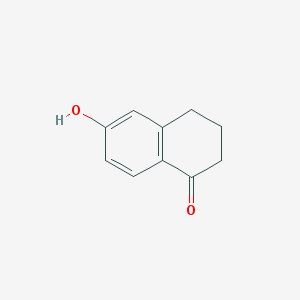Can scintillation light fight Alzheimer's disease? It turns out to trigger the release of signaling chemicals in the brain
-
Last Update: 2020-02-06
-
Source: Internet
-
Author: User
Search more information of high quality chemicals, good prices and reliable suppliers, visit
www.echemi.com
As early as 2016, it was found that in mice with Alzheimer's disease, 40 Hz flashing light can activate microglia to clear rubbish, thus providing a new way to manipulate the nervous and immune system However, the biochemical signal transduction mechanism is still unknown Researchers at the Annabelle singer laboratory at the Georgia Institute of technology recently published in the Journal of neuroscience to reveal how this flicker works They found in mice that exposure to 40 Hz light pulses releases a large number of signaling chemicals in the brain that may help fight disease DOI:https://doi.org/10.1523/JNEUROSCI.1511-19.2019 The frequency of 40 Hz is due to the lack of gamma waves in the early brain of Alzheimer's patients Gamma wave is a kind of mild and continuous brain wave, just like the dance beat of neuron activity Its most common frequency is about 40 Hz, so that mice exposed to this frequency of light can recover gamma rays, and also can prevent the brain damage caused by severe Alzheimer's disease In this study, the researchers used multiple immunoassays to find brain chemicals that link flicker with microglia and other immune activation in mice, and exposed 20 kinds of cytokine surge They found that 40 Hz flicker stimulated the phosphorous signal transduction in NF - κ B pathway of visual cortex in mice rapidly and briefly After NF - κ B phosphorylation, the phosphorylation in MAPK pathway increased, and the expression of many cytokines increased These cytokines are involved in microglial cell recruitment (such as M-CSF), neurotrophic properties (such as IL-6) and synaptic plasticity (such as IL-1) 40 Hz flicker for 1 hour, the expression of cytokines in visual cortex increased As a control, the researchers also applied three additional light stimuli, and to their surprise, all of them had an effect on cytokines Especially at 20 Hz, cytokine levels decrease, which may also be useful in some cases where you want to inhibit cytokines Many nervous system diseases are related to immune response, such as Parkinson's disease or schizophrenia, so different kinds of stimulation may become a tool platform in different situations So the team warned people not to use phototherapy on their own, because more data is needed to thoroughly determine the impact of phototherapy on humans, and the wrong frequency may even cause damage The research results in mice provide information for human experiments Researchers have made experimental masks and earphones to play 40 Hz photoacoustic, and conducted human tests As a possible treatment for Alzheimer's disease, the results of the tests will be published in subsequent studies.
This article is an English version of an article which is originally in the Chinese language on echemi.com and is provided for information purposes only.
This website makes no representation or warranty of any kind, either expressed or implied, as to the accuracy, completeness ownership or reliability of
the article or any translations thereof. If you have any concerns or complaints relating to the article, please send an email, providing a detailed
description of the concern or complaint, to
service@echemi.com. A staff member will contact you within 5 working days. Once verified, infringing content
will be removed immediately.







